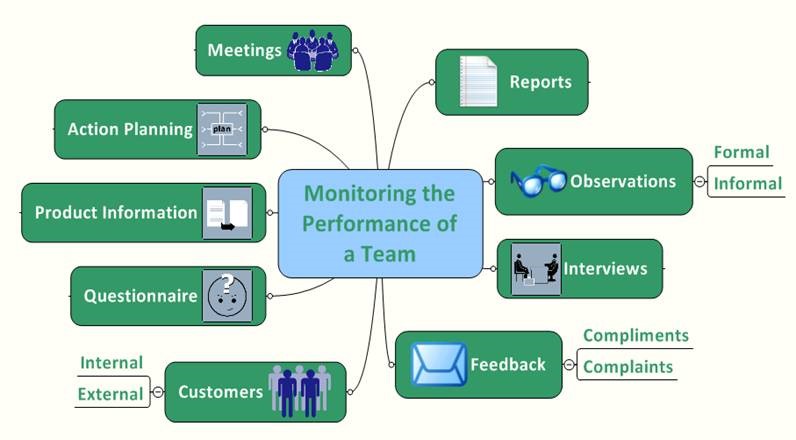Continuously monitor individual and team outputs and behaviours against the standards.
Definition
Monitoring can be defined as setting up ongoing procedures to collect and review information and performance with a view to manage an organisation or ongoing activities within it.
One of the important concepts in a performance and development management process is the concept of continuous monitoring and measuring of individual, team and organisation performance. For performance to improve, it is necessary that it be monitored and measured. Monitoring ensures, amongst other things, that products and services are delivered according to company standards, in acceptable quantities, at acceptable levels of quality, at agreed times and within budget and per customer requirement. Things that should be monitored are both production aspects like workflow, methods, procedures, costs, and results and people aspects like perceptions, attitudes, relationships, co-operation and teamwork. There are different means of monitoring, as discussed earlier.
Students can manually mark this item complete: Continuously Monitor Individual and Team Outputs A...
They are:
- Personal observation and personal inspection.
- Direct reporting by the staff members themselves.
- Feedback from superiors, peers, subordinates, and customers.
- Agreed performance- and development indicators.
- Outputs and results.
Making it more Practical, Performance Monitoring Systems can Include:
Verbal feedback, Inspection, Efficiency demonstration, Critical incident, Progress report, Statistics, Lists, Print-outs, Sales figures, Financials, Comebacks, Complements/complaints, Surveys, Customer feedback, Certificate of attendance, Certificate of competence, Test results, Diploma/degree.

Key actions that need to be performed are:
Identify monitoring needs. Determine which processes or areas need to be monitored; identify what information needs to be obtained.
Develop monitoring systems. Establish systems to monitor activities or outputs that are easy to use and that provide timely and pertinent information.
Implement monitoring systems. put an effective monitoring system in place with minimal interruptions for other organisational processes.
Review data. Collect and review data on a regular basis to determine progress, anticipate needs and make necessary adjustments to personnel or processes.